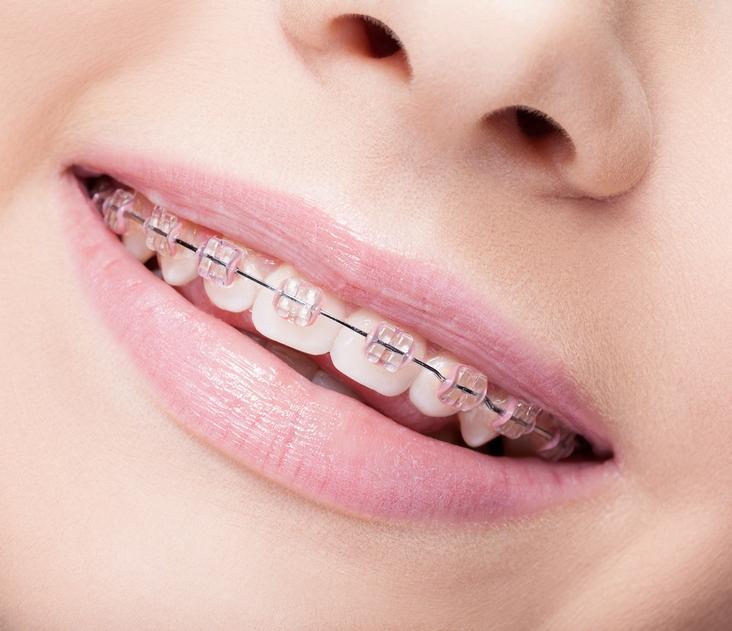- Categories :
- More
How Long Do Braces Take?

Did you know that ancient Egyptians used crude metal bands around their teeth in a quest for the perfect smile? Fast forward to today, and while the methods have evolved greatly, the exploration remains the same: achieving a well-aligned set of teeth.
When considering orthodontic treatments like braces, a common query often arises: “How long do you wear braces?” Knowing these variables can give you a clearer picture of what to expect on your journey toward a perfect smile.
What Are Braces?
Braces are orthodontic devices used to correct misaligned teeth, crooked teeth, and bite issues, aiming to provide a healthier and more attractive smile. They work by applying gentle pressure over an extended period to move teeth into their desired positions. An essential part of a dental braces treatment plan is the use of metal brackets.
These are attached to the teeth with a special adhesive and a metal wire, which connects the brackets and guides the teeth into alignment. When discussing how long do you have braces, it’s essential to consider that rubber bands or elastic bands are sometimes necessary to achieve the desired movement, adding another layer of correction. This additional step can influence the overall treatment duration.
How Long Do People Have Braces?
The duration of braces treatment varies significantly from person to person, depending on the complexity of their oral health issues and the type of braces used. On average, most people wear traditional braces for about 18 to 24 months, although some will have shorter treatment times or can be longer. For milder cases of misaligned teeth or bite issues, treatment may take around six months to a year.
Conversely, more severe orthodontic issues, such as significant crooked teeth or jaw alignment problems, can extend the treatment time to up to three years. Younger patients often experience faster changes because their jaws and teeth are still growing and can be more easily adjusted.
What Are The Factors Affecting The Treatment Duration?
Type of Treatment
The type of orthodontic treatment greatly impacts the duration. Traditional metal braces are typically used for severe misalignments and may take longer. Ceramic braces are more aesthetic but can slightly delay progress due to their fragility. On the other hand, lingual braces, placed behind teeth, may also extend treatment time, while removable trays like Invisalign often shorten it for milder cases.
Age
Age is a vital factor in orthodontic treatment duration because younger patients often have more responsive bone structures due to ongoing growth and development. However, older patients may still achieve successful results with orthodontic treatment, although it may result in a longer duration due to decreased bone turnover and a less favorable bone response. It’s important to remember that the patient’s age plays a significant role in determining how long to wear braces and when developing a treatment plan.
Severity of Dental Issues
The length of orthodontic treatment is directly impacted by how serious the orthodontic problems are.
Mild Issues. Mild cases, such as minor crowding or spacing, may require relatively short treatment times, typically ranging from 6 to 12 months, as they involve minimal tooth movement.
Moderate Issues. Conversely, moderate to severe cases, such as significant misalignments or complex bite issues, necessitate more extensive adjustments and may extend treatment durations to 12 months or longer.
Severe Issues. Severe misalignment or bite issues, which require extensive tooth movement and correction, can result in treatment durations of 36 months or more, depending on the complexity of the case and patient-specific factors.
Patient’s Overall Health
A patient’s overall health plays an important role in the duration of braces treatment. Factors like bone density, gum health, and the body’s ability to heal can impact progress. Good oral hygiene and nutritious diet support quicker adjustments, while conditions like gum disease might prolong the treatment process by requiring additional care.
Patient Compliance
Orthodontic patient compliance is essential for the success and efficiency of orthodontic treatment. Following instructions are a vital component; wearing elastics, avoiding harmful foods, and maintaining good oral hygiene can greatly influence the duration of the treatment. Regular check-ups are also crucial, as scheduling dental appointments allows for timely adjustments and orthodontic care, helping to achieve treatment goals within the estimated timeframe.
Lifestyle Factors
Lifestyle factors can significantly affect the duration of treatment for braces. Smoking, poor diet, and inconsistent oral hygiene can slow progress and cause complications. Regular exercise and a balanced diet promote better overall health, including oral health, which can speed up treatment. Adherence to orthodontist instructions and avoiding harmful habits like nail-biting or eating hard foods is essential.
How Can You Speed Up Your Braces Treatment?
Maintain Good Oral Hygiene. Consistent oral care practices, such as brushing, flossing, and using mouthwash, are important for keeping teeth and gums healthy during orthodontic therapy. Good dental hygiene aids prevent cavities (medically known as dental caries), gum disease, and other oral health problems that can delay treatment.
Follow the Orthodontist’s Instructions. Following your orthodontist’s instructions is essential to a successful orthodontic treatment. This includes wearing elastics or rubber bands as directed, avoiding foods that could damage your braces or aligners, and attending all scheduled appointments for adjustments and check-ups.
Keep Regular Appointments. Timely adjustments are essential for making sure that your orthodontic treatment stays on track. Missing appointments can delay progress and extend the overall treatment duration. If you show up on time for all of your planned sessions, your orthodontist can properly monitor your progress and make any required modifications.
Avoid Damaging Foods and Habits. Certain foods, especially those that are sticky or hard, can damage orthodontic braces or aligners and impede progress. It’s important to avoid these foods and also steer clear of habits like nail-biting or chewing on pens, which can interfere with your treatment.
Use Additional Appliances If Prescribed. In some cases, your orthodontist may prescribe additional appliances, such as headgear or palate expanders, to aid in your treatment. It’s best to use these appliances as instructed for optimal results and to shorten treatment duration.
Start Your Journey To A Healthy Smile Today: Book Your Consultation With Leiker Orthodontics Now!
Understanding how long do you have to wear braces is important for anyone considering braces. Factors such as the type of braces, severity of dental issues, patient’s age, and compliance all play significant roles in determining how long the treatment will take. Our orthodontist place a high priority on individualized care and treatment programs made specifically for each patient, guaranteeing the greatest results.
If you’re ready to start your journey to a healthier and straighter smile, contact us today. Our skilled orthodontic team will help you at every stage of the procedure, from the first examination to achieving the desired outcomes.












